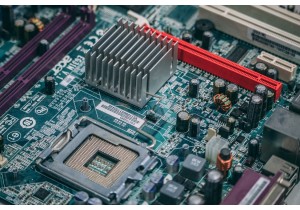CMOS (Complementary Metal-Oxide-Semiconductor) integrated circuits power nearly every modern electronic device. Their low power consumption, high scalability, and cost-effectiveness make them ideal for applications ranging from smartphones to AI systems. Below are the top 10 uses of CMOS ICs, supported by real-world examples, industry trends, and technical advantages.
1. Smartphones and Mobile Devices
CMOS ICs handle processing, memory, and imaging in smartphones. The camera’s image sensor is a CMOS chip, enabling 4K video and low-light photography.
-
Example: Apple’s iPhone uses CMOS sensors for Face ID and portrait-mode photos.
-
Advantages: Low power extends battery life; compact size allows thinner devices.
-
Trend: 5G adoption demands CMOS-based RF chips for faster data transmission.
-
Network Integration: CMOS modems enable Wi-Fi 6 and Bluetooth connectivity.
2. Internet of Things (IoT) Sensors
CMOS sensors monitor temperature, motion, and light in smart homes and cities.
-
Example: A smart thermostat uses CMOS humidity sensors to adjust room conditions.
-
Advantages: Minimal power use lets devices run for years on small batteries.
-
Trend: Smart cities deploy CMOS air quality sensors for pollution tracking.
-
Network Integration: Data is transmitted via CMOS-powered LoRa or Zigbee modules.
3. Medical Imaging Equipment
CMOS ICs process signals in MRI machines, X-ray systems, and wearable health monitors.
-
Example: Portable ECG devices use CMOS chips to track heart rhythms accurately.
-
Advantages: High noise immunity ensures reliable diagnostics.
-
Trend: Miniaturized CMOS endoscopes reduce invasive surgery risks.
-
Network Integration: Patient data syncs to cloud servers via CMOS-enabled Wi-Fi.
4. Automotive Control Systems
CMOS microcontrollers manage engine performance, safety systems, and infotainment.
-
Example: Tesla’s Autopilot uses CMOS image sensors for lane-keeping and collision avoidance.
-
Advantages: High heat tolerance ensures reliability in harsh environments.
-
Trend: Electric vehicles (EVs) rely on CMOS power management ICs for battery efficiency.
-
Network Integration: V2X (vehicle-to-everything) communication uses CMOS transceivers.
5. Consumer Electronics
CMOS drives 4K TVs, digital cameras, and gaming consoles.
-
Example: Sony’s CMOS sensors in DSLR cameras deliver high-resolution photos.
-
Advantages: Fast signal processing reduces motion blur in action scenes.
-
Trend: 8K TVs require advanced CMOS display drivers for sharper visuals.
-
Network Integration: Smart TVs use CMOS Wi-Fi chips for streaming services.
6. Data Centers and Cloud Computing
CMOS ICs power servers, storage systems, and AI accelerators in data centers.
-
Example: Google’s TPU (Tensor Processing Unit) uses CMOS technology for AI workloads.
-
Advantages: High transistor density improves computational speed.
-
Trend: Hyperscale data centers adopt CMOS-based 400G Ethernet switches.
-
Network Integration: CMOS optical transceivers enable high-speed fiber connections.
7. Networking and Communication Devices
Routers, switches, and 5G basebands use CMOS for signal processing.
-
Example: Cisco’s routers employ CMOS chips to handle gigabit traffic.
-
Advantages: Low heat output reduces cooling costs in telecom towers.
-
Trend: Open RAN (Radio Access Network) relies on CMOS for modular 5G infrastructure.
-
Network Integration: CMOS phased-array antennas enhance 5G signal coverage.
8. Industrial Automation
CMOS microcontrollers automate assembly lines and robotic arms.
-
Example: Siemens PLCs (Programmable Logic Controllers) use CMOS ICs for precision control.
-
Advantages: High durability in dusty or humid factory environments.
-
Trend: Industry 4.0 integrates CMOS IoT sensors for predictive maintenance.
-
Network Integration: Machines connect via CMOS-enabled Industrial Ethernet.
9. Aerospace and Satellite Systems
CMOS ICs operate in GPS satellites, avionics, and Mars rovers.
-
Example: SpaceX’s Starlink satellites use CMOS transceivers for global internet.
-
Advantages: Radiation-hardened CMOS withstands space conditions.
-
Trend: Low-Earth Orbit (LEO) satellites use CMOS for high-speed data links.
-
Network Integration: Satellite-to-ground communication relies on CMOS RF systems.
10. Artificial Intelligence and Machine Learning
CMOS-based GPUs and TPUs train neural networks for voice assistants and autonomous systems.
-
Example: NVIDIA’s A100 GPU uses CMOS transistors for deep learning tasks.
-
Advantages: Scalability supports complex algorithms like ChatGPT.
-
Trend: Edge AI devices use low-power CMOS chips for real-time processing.
-
Network Integration: AI models are deployed via CMOS-powered cloud platforms.
Conclusion
CMOS integrated circuits remain foundational to modern electronics due to their adaptability and efficiency. From smartphones to satellites, they enable innovations while reducing costs and energy use. Industry trends like 5G, AI, and IoT will continue to drive demand for advanced CMOS solutions. Engineers prioritizing low power, high performance, and network connectivity will find CMOS ICs indispensable in future designs.
By understanding these applications, businesses and developers can leverage CMOS technology to stay competitive in fast-evolving markets. Always verify component specs with suppliers and test prototypes to ensure compatibility with your system’s requirements.

